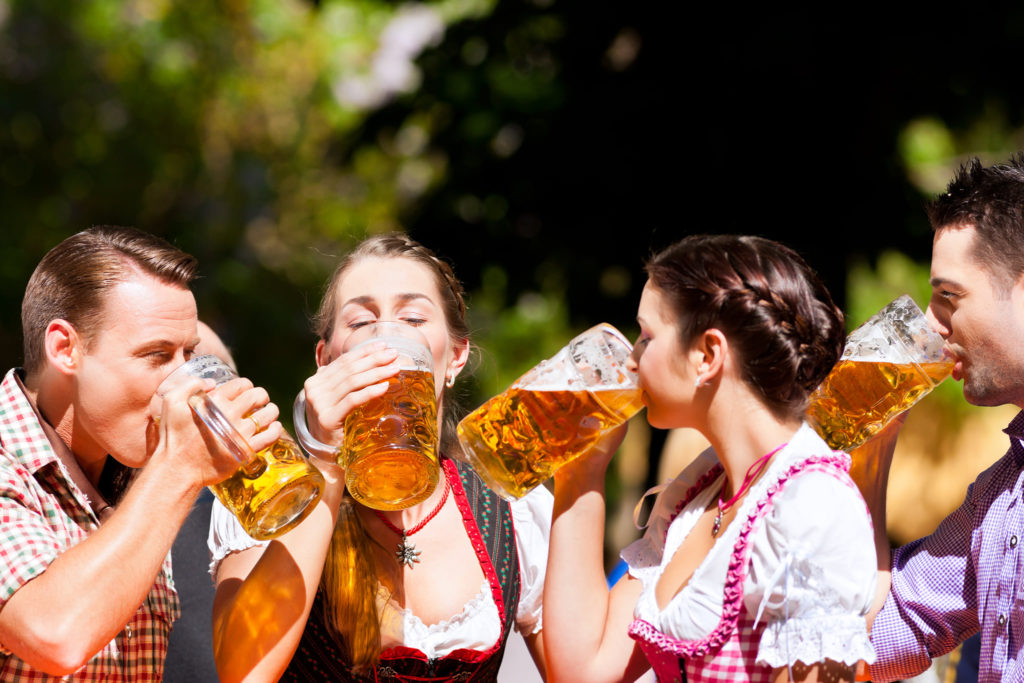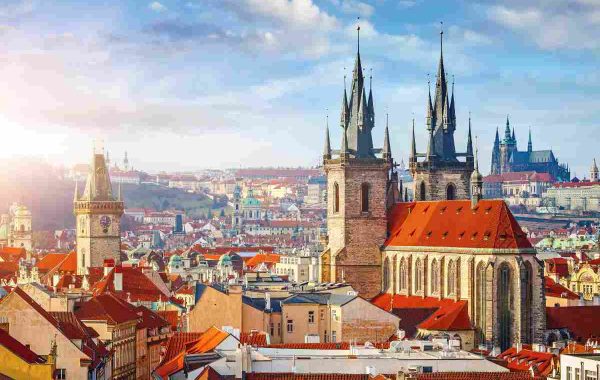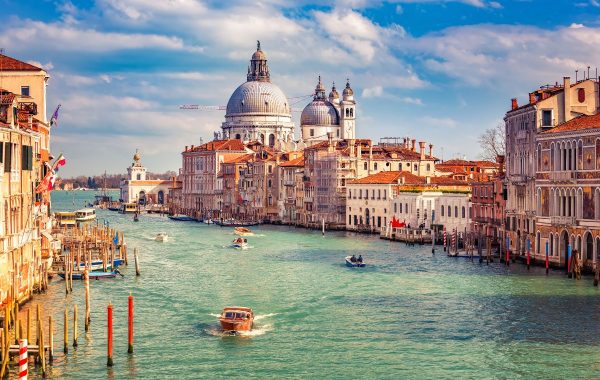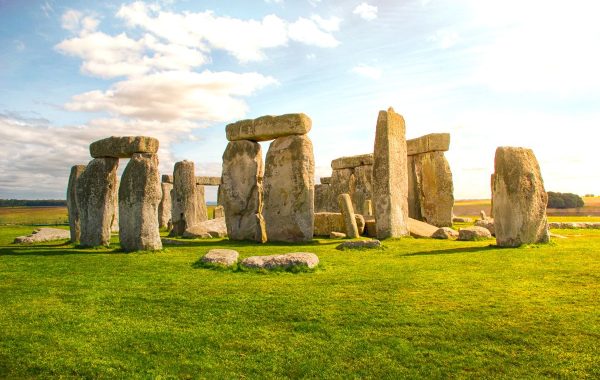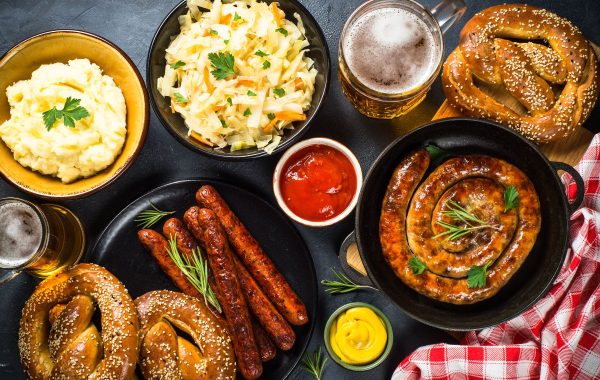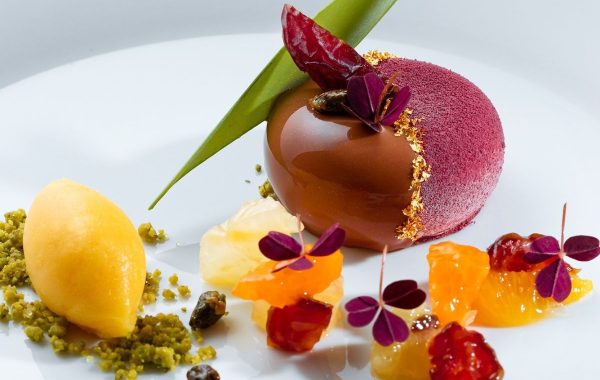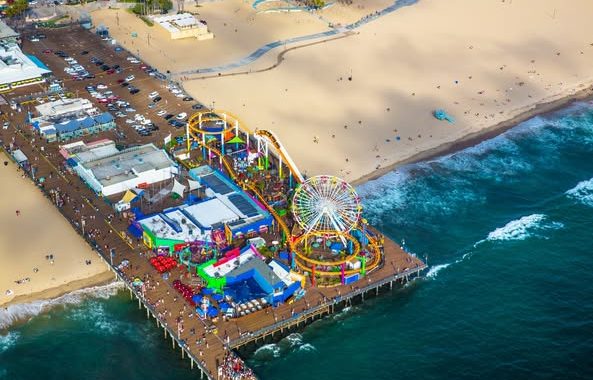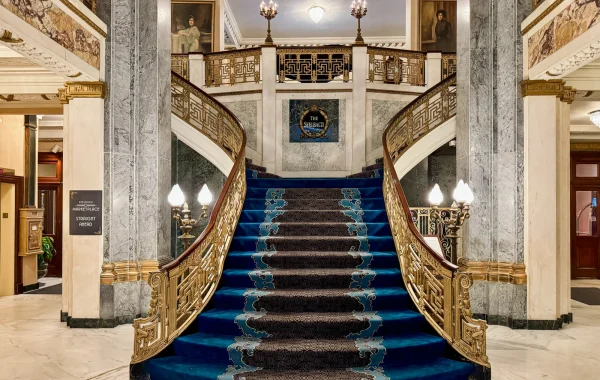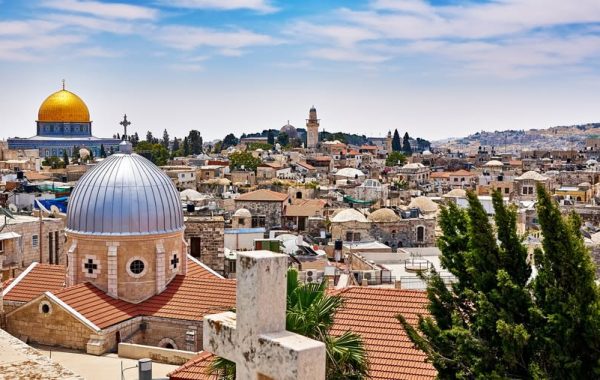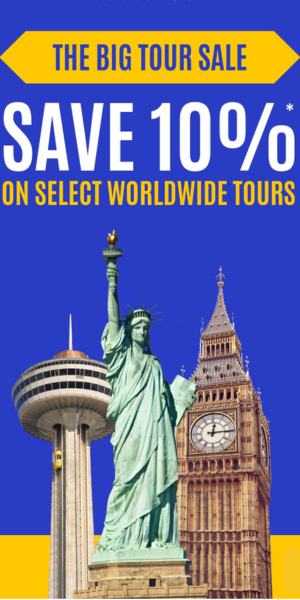The ultimate first-timer’s guide to Oktoberfest, featuring the top beer tents, insider tips, and everything you need for an unforgettable experience.
Traveling halfway around the globe to stand in line early in the morning for beer and chicken might sound unusual, but Oktoberfest in Munich is no ordinary festival. What began as a horse race in 1810 to celebrate Bavarian Crown Prince Ludwig’s wedding has evolved into one of the largest and most famous festivals worldwide. Each year, approximately 7 million liters of beer are consumed at Oktoberfest. To give you an idea, drinking a pint a day would take over 57,000 years to reach that amount!
Here’s a comprehensive guide to help you make the most of your Oktoberfest experience without finding yourself resting on a patch of grass behind a tent.
The Basics
Oktoberfest is held at Theresienwiese in Munich, Germany. Despite its name, most of Oktoberfest actually takes place in September due to better weather conditions. In 2024, the festival runs from Saturday, September 21st to Sunday, October 6th. The festival grounds feature a variety of attractions, including large and small beer tents, rides such as a Ferris Wheel, and activities like the traditional costume parade.
Must Read: City Guide: A First Timer’s Travel Guide To Munich, Germany
Entry to the festival and its tents is free. Smoking is prohibited inside the tents. While children are welcome, those under six years old must leave the tents by 8 p.m. Family days with discounted rides are scheduled for September 24 and October 1, 2024 (both Tuesdays).
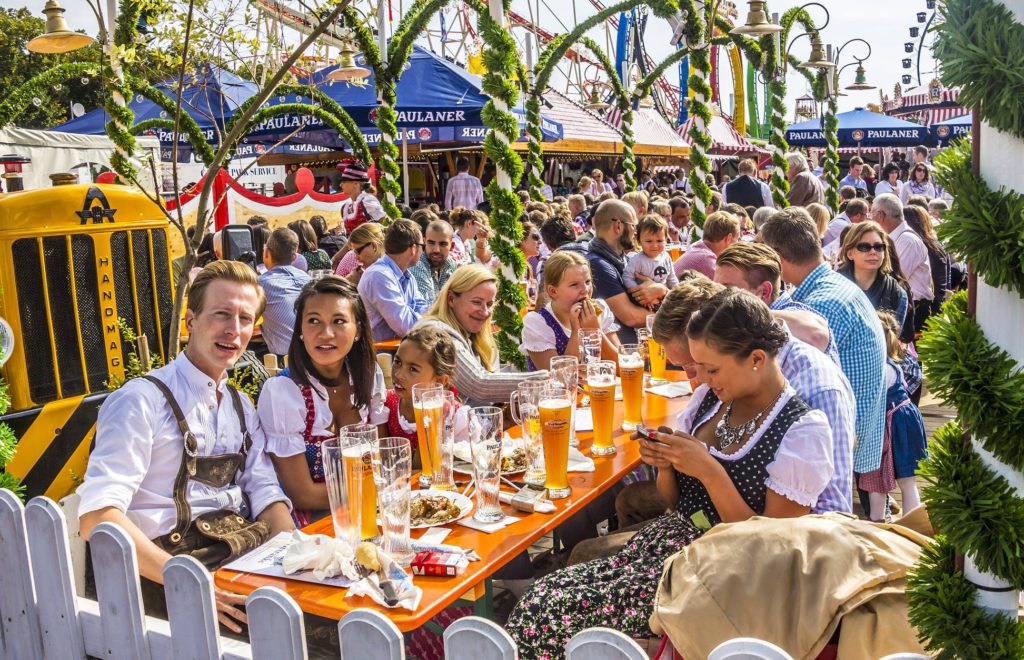
On-Site Orientation
Oktoberfest is hosted at Theresienwiese in Munich, which can be easily reached on foot or by public transportation via several entrances.
The festival grounds are mainly divided into two sections. On the right (west) side from the main entrance, you’ll find Wirtsbudenstraße, where most of the large beer tents are located. On the left (east) side lies Schaustellerstraße (Showmen Street), featuring the majority of the major rides. These two areas are connected by several cross-ways, with the largest being Matthias-Pschorr-Straße, situated in front of the Bavaria statue.
The Tents and Beers
The Oktoberfest grounds are expansive, and choosing a tent can be a delightful dilemma. There are 14 large tents and 20 smaller ones, with some of the larger tents seating up to 9,000 people. Each tent serves beer from a specific Munich brewery. Munich’s breweries adhere to the Reinheitsgebot, a German beer purity law from the 15th century, ensuring that only water, barley, and hops are used in brewing. All breweries offer their Oktoberfest beer, which is a strong brew with an ABV of around 6%, along with weißbier (wheat beer).
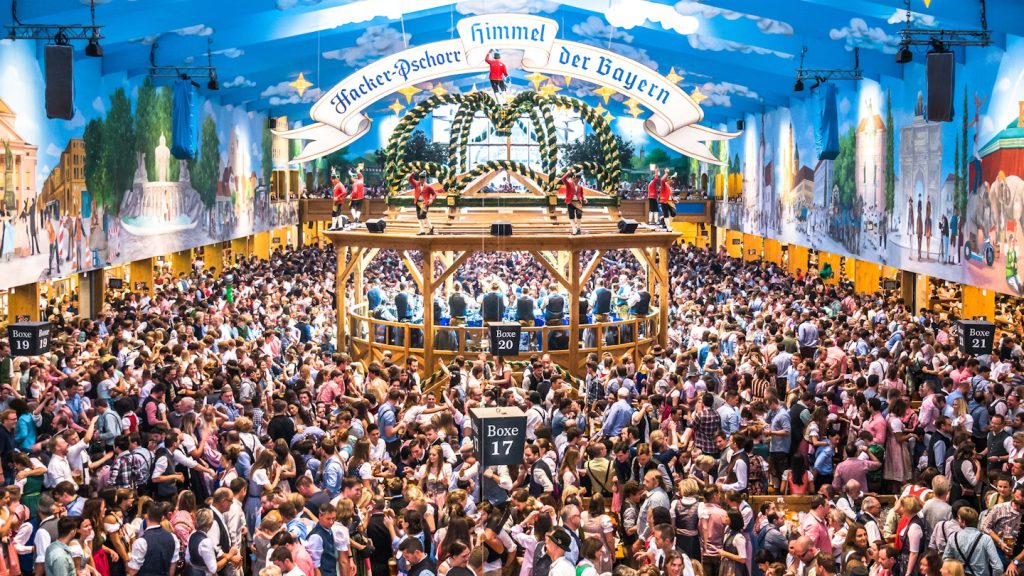
Beer is served exclusively in one-liter mugs called Maß (pronounced mass). The beer price for Oktoberfest 2024 is between 13.60 euros and 15.30 euros, an average of 3.87 percent more than in 2023. Last year, the price range was still between 12.60 euros and 14.90 euros. Most tents also serve radler, a mix of beer and lemonade, which can be a refreshing alternative. Alcohol-free beer is available at the same price.
The Schottenhamel tent is the oldest and is where Oktoberfest officially begins when the Munich mayor taps the first keg at noon on opening day. The Schützen-Festhalle tent is famous for its suckling pig with beer sauce, the Ochsenbraterei tent is known for its oxen roasted on the spit, and the Fischer-Vroni tent offers delicious smoked fish.
The Hofbräu-Festzelt is the most tourist-friendly tent, and it’s unique in that it serves beer to those standing. If beer isn’t your thing, the Weinzelt tent offers around 15 wines by the glass along with Paulaner’s weißbier.
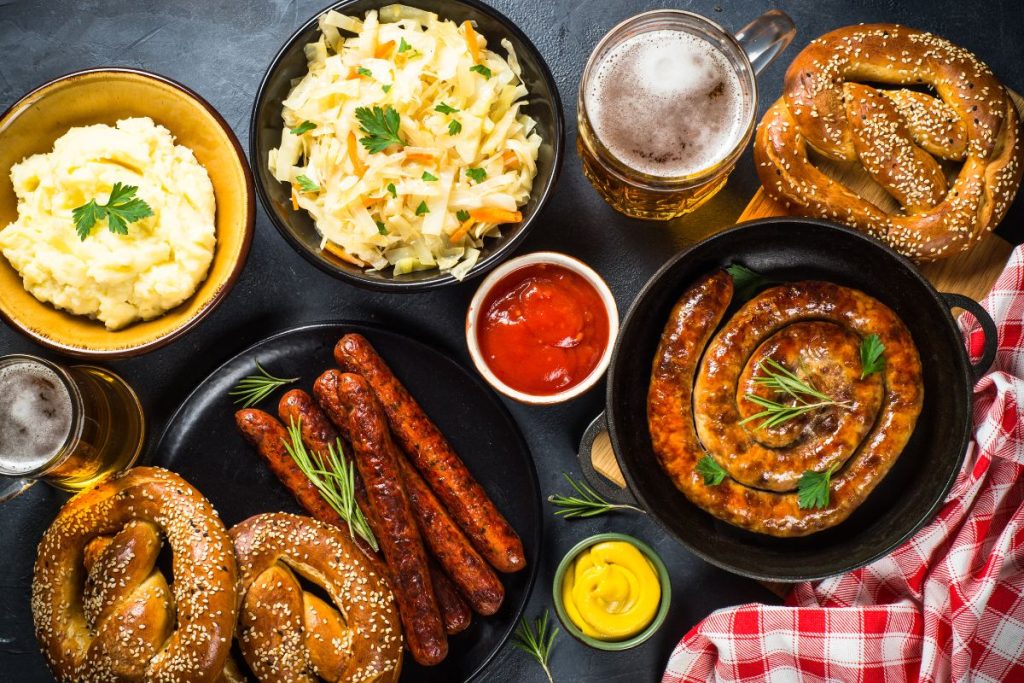
Must Read: 72 Hours in Frankfurt, Germany | Travel and Food Guide
Authentic Oktoberfest Originals
Even with ample time, some iconic Oktoberfest attractions might escape your notice or seem puzzling. Here are a few of the most celebrated and classic features of the festival:
Schichtl: This historic vaudeville theatre, established in 1867, is renowned for its parade, which is viewable for free from the outside, and its unique indoor attraction where a visitor is humorously “executed” by a mock guillotine.
Bavaria: The imposing statue of Bavaria offers a panoramic view of the Oktoberfest grounds from within. For an even broader perspective, you can visit the tower of Paulskirche, a church located north of Theresienwiese. On clear days, you might catch a stunning glimpse of the Alps beyond the Ferris wheel.
Krinoline: Built in 1924, the Krinoline may not be the oldest ride at Oktoberfest, but it remains one of the most charming. It’s notable for being the only ride featuring live performances by a traditional brass band.
Teufelsrad: A favorite among locals, the Teufelsrad has been thrilling visitors since 1908. Participants try to stay on a spinning disc for as long as possible. With a single payment, you can test your endurance as long as you wish.
Toboggan: Especially captivating after dark, the Toboggan attracts large crowds who enjoy watching riders struggle to ascend a challenging slide using a tricky treadmill.
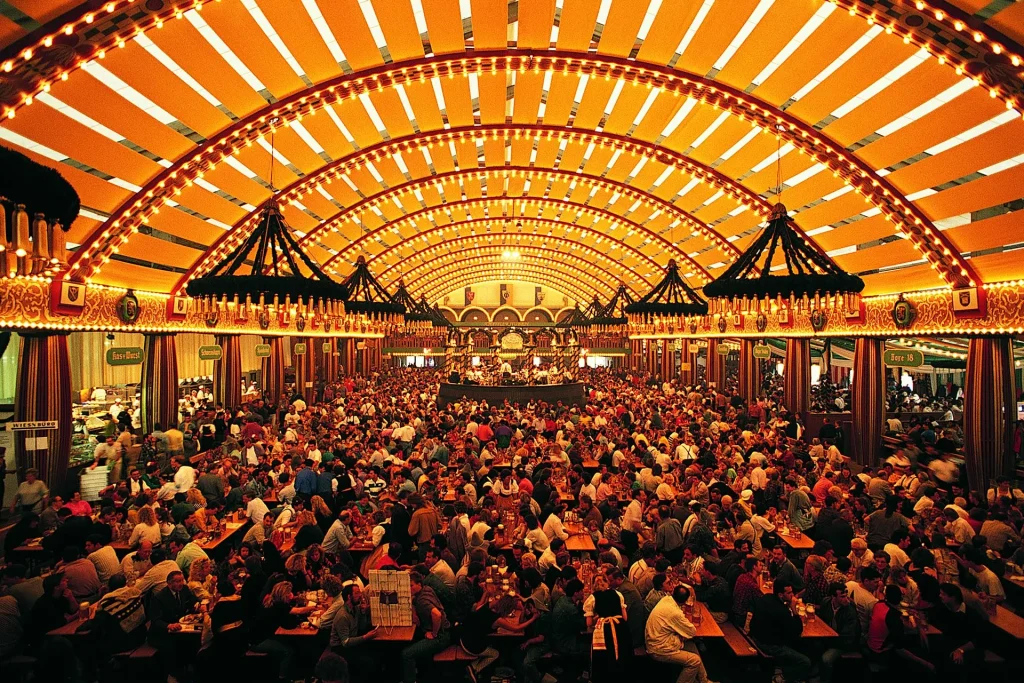
Dos:
- Dress the Part: Embrace the local tradition by wearing traditional Bavarian attire. Men should consider lederhosen, which start around €100/Rs 9,500, or a blue-and-white check shirt if lederhosen isn’t in the budget. Women should opt for a dirndl, starting at €75/Rs 5,625. The side on which the Dirndl apron bow is tied traditionally indicates marital status.
- Tip Generously: Leaving a tip of €10-20/Rs 950-1,800 after your first round ensures good service and might even help you get into a tent on a later day.
- Learn Local Songs: Familiarize yourself with popular songs like “Fliegerlied” and “Viva Colonia” to join in the fun.
- Carry Your Address: Write down your address and keep it with you. This simple step can be a lifesaver if your phone dies or if you get lost.
- Use a Buddy System: Stay close to your friends; the festival can be overwhelming, and having a buddy ensures you stay safe.
- Go to the Restroom in Groups: The tents are large, and the lines for the toilets can be long, so it’s perfectly acceptable for men to use the facilities in groups.
- Bring Tissues and Hand Sanitizer: Prepare for spills and mishaps by carrying tissues and hand sanitizer.
- Explore Munich: Take a walking tour of the city to enhance your experience.
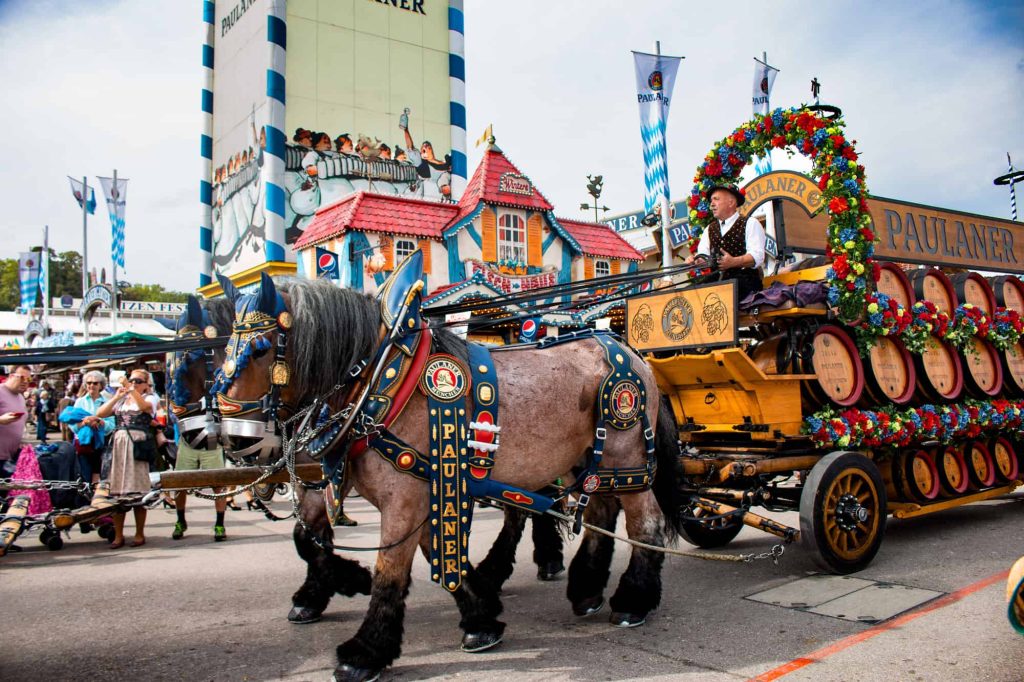
Don’ts:
- Don’t Rush: Oktoberfest is a marathon, not a sprint. Take your time and enjoy the festivities.
- Avoid Taking Souvenirs: The one-liter mugs are not souvenirs you can take home. Security is tight, and festival staff, along with plainclothes police, enforce this rule.
- Don’t Leave the Tent Unnecessarily: Re-entering the tent can be difficult once you leave, so stay put if possible.
- Minimize Your Belongings: Avoid carrying large bags or purses to make moving around easier.
- Don’t Hoard Seats: Reserving seats for others can irritate both the servers and fellow festival-goers.
- Avoid Open Shoes: Protect your feet from being stepped on by wearing closed-toe shoes.
For latest travel news and updates, food and drink journeys, restaurant features, and more, like us on Facebook or follow us on Instagram. Read more on Travel and Food Network
Trending on TFN
A Spanish Odyssey: Trafalgar’s Unparalleled Best of Spain Itinerary
Imperial Splendors: Trafalgar’s 10-Day Sojourn in Prague, Vienna, and Budapest


